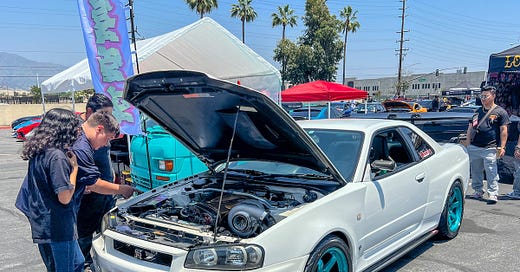An Auto Parts Giant Grew 40% in 2020. It Just Declared Chapter 11
The bankruptcy filing of Parts iD is a cautionary tale for aftermarket e-commerce
AT THE END OF 2020, Parts iD, the automotive aftermarket retailer, was having a moment. The global pandemic had fueled a rush in direct-to-consumer orders, revenue was up by 39.3-percent, and the company had just gone public on the New York Stock Exchange.
Three years later, the company is in deep trouble. Parts iD filed for Chapter 11 bankruptcy protection earlier this week after reporting assets of $18 million and liabilities over $55 million.
The full numbers are pretty shocking. According to quarterly reports, total revenue fell to $48 million through the first nine months of 2023 compared to $279 million for the same period in 2022 — a mammoth 82.8-percent drop. At close of business Thursday, the stock price traded for fewer than $0.05 per share after a high of more than $9.00 in 2021.
Experts say e-commerce is a main factor that will grow the aftermarket through 2030.
Those are drastic figures for a company once heralded as a potential game-changer in aftermarket retail. Its use of artificial intelligence, a focus on customer service and an extensive network of business partners that perform the mechanic work were all deemed market advantages. Without its own physical locations, this allowed Parts iD to facilitate sales across the country while avoiding the overhead expenses of brick-and-mortar stores.
Further, the software behind Parts iD allowed it to skip to the front of the line during the direct-shipping craze of the pandemic. Wheels, exhaust pipes and other parts guaranteed to fit your car could be ordered straight to your front door. Thanks to its partner network and that A.I software, Parts iD could do it in record time, too.
Since then, however, customer loyalty has been a challenge. Few people are worried about visiting physical stores today. Dominant brands like AutoZone and O’Reilly Automotive have strengthened their grip on the market. Parts iD, by contrast a nearly faceless entity existing only on the web, lost traction fast.

What’s the market like now?
Buyers are nervous these days. Interest rates have steadied recently, and employers added 199,000 new jobs in November. Still, many worry that 2024 will bring layoffs. It may not look like a recession, but the vibes are off. It’s a vibecession.
There are indications that the auto aftermarket is echoing those sentiments. According to the Specialty Equipment Manufacturers Association, or SEMA, the industry is expected to top $52 billion in total retail sales in 2023 — its highest one-year total ever. But that effect isn’t necessarily felt across the board.
In the SEMA State of the Industry Report released in October, a survey showed that the number of retailers growing sales in 2023 increased, but so did the number of retailers experiencing loss. Basically, fewer retailers stayed the same this year, with the top earners dragging the industry up. It’s a net positive, but with shaky footing.
One of the defining traits of Parts ID was its all-in approach to e-commerce. This allowed it to grow quickly and ride a trend that many believe is the future of aftermarket sales. According to SEMA:
larger aftermarket retailers reported 20-percent of sales were made through their own company websites;
smaller companies, or those with fewer than $500,000 in annual sales, reported only 9-percent of sales through company sites.
But with only e-commerce to rely on, Parts iD lacks the physical presence and brand recognition of many rivals. A slick website and some smart AI may not be enough to capture growing demand.
Parts iD has some moves left. The growth of e-commerce does not appear to be slowing. A report from the consulting group McKinsey & Company predicted over the summer that e-commerce is one of three main factors that will keep the aftermarket growing through at least 2030. (But, it said, it also creates a “winner-take-all” scenario that demands scale to survive.)
Recently, another struggling competitor, CarParts.com, doubled down on automotive e-commerce by launching a mobile shopping app. Parts iD could also stand to improve its consumer-facing presence — with 51,000 Instagram followers and 87,000 YouTube subscribers, its CarID brand severely lags fellow e-commerce retailer Throtl with more than 653,000 followers and 2.2 million subscribers. That helps them show off their inventory and expertise, which creates community, and brand equity.
Whether the company has a bright future or not, 2024 figures to be a critical year for Parts iD. Perhaps they’ve shaken off some of the issues that plagued it in 2023. Either way, it’s likely left a mark on the way you’ll buy rims and coilovers in the future.
If you enjoyed this breakdown, please consider sharing it with your friends:
Have a wonderful weekend and Happy New Year, everyone!
Check out Carrara Media on Instagram, Twitter and Facebook and visit our store to order one of our many fine books and eBooks.





